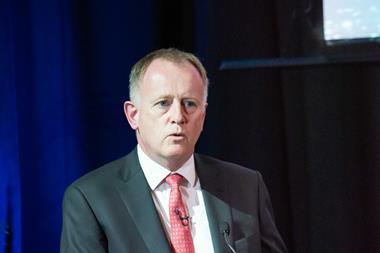The 11 chosen insurtechs will make up the third cohort of the Lloyd’s Lab
Lloyds of London has welcomed 11 new teams of insurtech disruptors to join its innovation accelerator programme, the Lloyd’s Lab, and support the Future of Lloyd’s manifesto.
The 11 teams selected were part of a competitive process involving 24 shortlisted applicants who presented their ideas to experts across the market during pitch day.
They will be focused on finding solutions that could potentially contribute to services that are part of the Future at Lloyd’s vision. This includes ways to enhance data sharing and provide new sources of risk insight.
These teams will begin working in the Lab as part of a ten-week programme that kicks off on 2 September.

It follows Lloyd’s recently committing to expanding the scope of its Lloyd’s Lab as part of its new strategy for the future. The selected teams will be aligned with this.
Best talent
Bruce Carnegie-Brown, Lloyd’s chairman, said: “Times are changing, and we are building a new vision for the Future at Lloyd’s.
“We see a huge opportunity to partner with the brightest and best talent from the technology sector to develop new ideas, new ways of working and of serving our customers.
“Nowhere is this more keenly felt than in the Lloyd’s Lab, where talent, technology and capital intersect so creatively. We want to harness this creative spirit to help us build a new Lloyd’s, which is nimbler, more customer focused, faster and more efficient than ever.”
Lloyd’s chief executive, John Neal said in June that it risks becoming irrellevant unless it grasps the tech revolution.
Most recently it delayed the launch of its platform Chorus until 2020.
The full list of teams in Lloyd’s Lab are:
- ClimaCell: Claims to be the first microweather™ technology company, finding and forecasting weather that others can’t see. It does this using an internet-of-things approach to collect millions of weather observations, ClimaCell forecasts at the street (not city) level.
- Digital Fineprint: An Insurtech that helps insurers and brokers improve their reach and profitability in the SME market. DFP provides data insights that can be used for risk selection, underwriting, pricing and new business generation.
- Flock: A big data start-up that helps underwriters unlock the power of risk intelligence.
- Floodflash: It says it enables fairly priced, no-exclusions, instant-settlement flood insurance. Customers receive a pre-agreed settlement as soon as FloodFlash sensor detect that waters have exceeded a critical depth
- Hyperexponential: It is building practical, impactful pricing software for speciality insurance. It claims to be the first platform of its kind to be built by insurance professionals “at the coal-face of the market, for the needs of our actuaries and underwriters”.
- INARI: An advanced ecosystem in a box that digitises insurance operations through the entire risk lifecycle. INARI says it combines “process automation, data ingestion processing, distributed ledger auditability, machine learning and data lake”.
- Insurdata: The Insurdata platform creates high resolution, building level, peril specific exposure data globally.
- Oasis: It provides an open source catastrophe modelling platform, free to use by anyone. It is also a community that seeks to unlock and change the world around catastrophe modelling to better understand risk in insurance and beyond.
- Phinsys: It has built a platform of intelligent finance automation tools to deliver systematic controls to optimise financial close and reporting processes.
- Praedicat: It reads, curates and quantifies data from science to identify emerging and emerged risks to humans / the environment. They quantify the loss to economy and liability insurers from litigation allowing risk management and product development.
- Tautona AI: Tautona is a “cognitive automation” company that automates processes once reserved for human judgement. It says: “Our cloud based, managed service approach provides insurers with a frictionless approach to automating claims and ancillary processes.”
More than 130 applications were received from across the world for the third cohort of the Lloyd’s lab.
Hosted by comedian and actor Tom Allen, 34 Gold, 23 Silver and 22 Bronze awards were handed out across an amazing 34 categories recognising brilliance and innovation right across the breadth of UK general insurance.




















































No comments yet